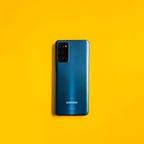Phones that cost under $200 are more functional than they were in the past. Phones in this price range, like the Samsung Galaxy A15 5G, have 5G support for faster data and NFC for contactless payments. Other phones, like the 2023 Motorola Moto G Stylus, are better media machines, providing stereo speakers to improve audio quality while including cameras that take decent photos.
These cheaper phones have noticeable trade-offs: They usually run slower than more expensive phones, and while they will usually ship with the latest version of Android, there might be only a short window of security update support. That last issue is particularly important to keep in mind when shopping in this price range, as it’s risky to use a phone that’s no longer being protected against security vulnerabilities by its manufacturer.
We wouldn’t consider any of these picks to be productivity machines, but these phones are likely going to be more useful than you would expect for the price. Plus, some of these cheap smartphones might end up being “free” when signing up with a phone carrier’s subsidization program usually requiring a two-year commitment to get the cost covered.
What’s the best phone under $200?
Like with any phone choice, the best device is going to depend on what you are valuing the most from your phone as a communication device and as a camera. However, if device cost is the most sensitive issue, then the $200 Samsung Galaxy A15 5G is the option I can most recommend. Samsung provides the A15 with four major software updates along with five years of security updates, making it a secure phone to use for several years. That said, the device is a little sluggish in performance and the camera isn’t great, but if cost is the highest priority then the A15 is otherwise a great entry-level option for a prepaid phone plan
We’re not crazy about its photography, and if that’s more important to you than 5G, you should also take a look at the $200 Moto G Stylus (2023) for its better camera quality. If you need a phone that’s even cheaper, we’re also keeping around the $160 Galaxy A03S in this list. That device is still being supported by Samsung, but keep in mind that it has only a tiny 32GB of storage space. The phones on this list are often heavily discounted.
Best phones under $200 of 2024
Samsung’s $200 Galaxy A15 5G is an easy choice for someone looking to buy a phone that will last for years. Samsung provides it with four years of software updates and five years of security support, which in this price range is unparalleled. Plus the phone supports 25W wired charging that in my testing was able to charge half of its big 5,000-mAh battery from empty in 30 minutes. I also like the eye-catching light blue option.
A $200 phone has to have some compromises. The Galaxy A15 5G feels sluggish compared to competing phones like Motorola’s $200 Moto G 5G, and as an entertainment machine falls short with its single audio speaker that is blocked by accident when you hold the phone sideways for games and video. Photography, which is typically a weak point on phones in this price range, is similarly mixed with decent photography in outdoor environments while struggling to photograph lowlight spaces. This makes the Galaxy A15 5G an easy choice for when you just need a phone that can handle the basics, but you may want to consider other options if you are looking for the best pocket YouTube player in this price range.
The TCL 50 XL 5G includes an impressive amount of specs for $160. This is one of the cheapest phones I’ve seen so far that includes a 120Hz refresh rate display and NFC for Google Pay and contactless payments. It also includes 6GB of memory, which made the phone breeze through multitasking during my testing. But the TCL 50 XL 5G does show compromises from its low price in other ways.
Even though it has a big 5,010-mAh battery, it drains quickly — possibly because it’s powering a large 6.78-inch 1080p display with a low-end processor. Cameras struggle to take photos with clean, crisp details, in both well-lit and lowlight situations. It’s carrier-locked to T-Mobile as well, making it only useful when running on the magenta carrier or its Metro prepaid brand. And it’s also only set for one software update and three years of security updates, which matches what Motorola provides but is still low compared to Samsung. But if you’re on T-Mobile, the TCL 50 XL 5G is a serious value for its $160, and helps excuse some of its faults. But you should still be aware of them.
Motorola’s $200 Moto G 5G for 2024 arrived with a splash. The phone kept many highlights of its higher-priced $250 2023 model like a 120Hz refresh rate screen and dual speakers. The Moto G 5G also has an improved design and functionality with a new vegan leather look and NFC for contactless payments. And its cameras can take photos with decent color accuracy, despite soft details.
But performance and a short software update timeline both hurt the Moto G 5G. While the phone is capable of running all sorts of apps and games, multitasking on its small 4GB of RAM is challenging. Even with Motorola’s RAM boost feature, which simulates an additional 4GB of RAM using built-in storage, apps would often need to reload when swapping between them. And Motorola has not budged from its policy of providing one major software update and three years of security updates to the Moto G line, which limits the number of years you can safely use the phone before needing to replace it.
The $200 Moto G Stylus doesn’t have 5G, but instead includes a built-in stylus along with a decent 50-megapixel main camera. The Stylus did a nice job taking photos while I was in a variety of environments, both indoors and outdoors. I particularly enjoyed the phone’s take on Portrait mode, and it captured a clear photo of the plant wall in CNET’s New York office that I use for photo testing. The 6.5-inch 720p display is also able to run at a consistent 90Hz refresh rate, providing smooth animations while navigating apps and reading websites.
The phone is otherwise let down by Motorola’s software and security update policy for its G series of phones, covering only one software update and three years of security updates. That, combined with the lack of 5G or NFC, means that while it’s a great choice for better pictures, there are several ways this phone could become left behind as the years pass. If you plan on using this phone for only two to three years, you could get a lot of value out of this device.
Samsung’s Galaxy A03S at $160 (roughly £126, AU$240) could still be a great fit for someone looking for the cheapest possible phone that can handle most essential tasks. The phone’s 6.5-inch screen, capped at 720p resolution, is good for reading the news, watching videos and playing games. Despite some performance lag found during our review, the phone is good at multitasking. The phone’s tiny 32GB of storage space could fill up fast, so if you’re considering this phone, it may be worthwhile to think about expanding the storage with a microSD card.
The A03S, first released last year, is getting four years of security updates, meaning that there are still three left. It’s less clear how many Android version updates are scheduled, and unlike the newer A14, it doesn’t have 5G support or NFC. While those two benefits along with the A14’s 64GB of internal storage are worth the extra $30 price increase, you can still get some mileage out of the A03S if you’re simply looking for the cheapest Samsung phone possible.
Try it before you buy it: It’s one thing to ogle over a phone, but it’s another to actually try it out in a store.
Decide on Android or iPhone: Do you have a lot of iPhone apps and Apple subscriptions? Stick with an iPhone. Likewise, if you’ve invested in loads of Android apps, you’ll want to stay on that side of the fence. Otherwise, it’s simple enough to switch platforms.
Pick the most important feature: Is it screen size? Camera quality? Battery life? This will help narrow down your choices.
Every phone on this list has been thoroughly tested by CNET’s expert reviews team. We actually use the phone, test the features, play games and take photos. We assess any marketing promises that a company makes about its phones. If we find something we don’t like, be it battery life or build quality, we tell you all about it.
We examine every aspect of a phone during testing:
- Display
- Design and feel
- Processor performance
- Battery life
- Camera quality
- Features
We test all of a phone’s cameras (both front and back) in a variety of conditions: from outdoors under sunlight to dimmer indoor locales and nighttime scenes (for any available night modes). We also compare our findings against similarly priced models. We run a series of real-world battery tests to see how long a phone lasts under everyday use.
We take into account additional phone features, like 5G, fingerprint and face readers, styluses, fast charging, foldable displays and other useful extras. We weigh all of our experiences and testing against the price, so you know whether a phone represents good value.
Read more: How we test phones
Are cheaper phones worth it?
What about phones that are even cheaper, like under $100?






